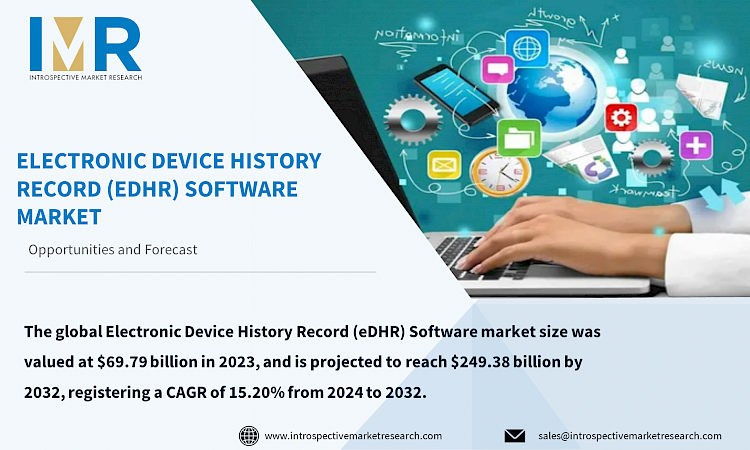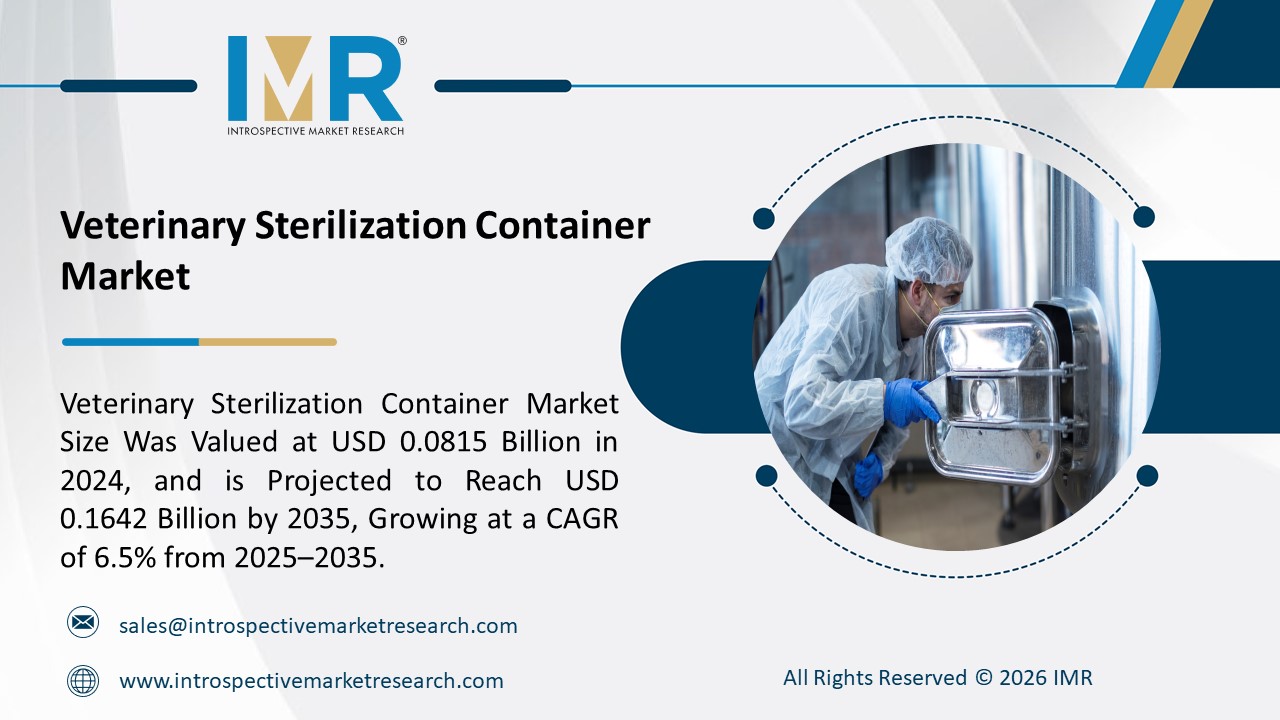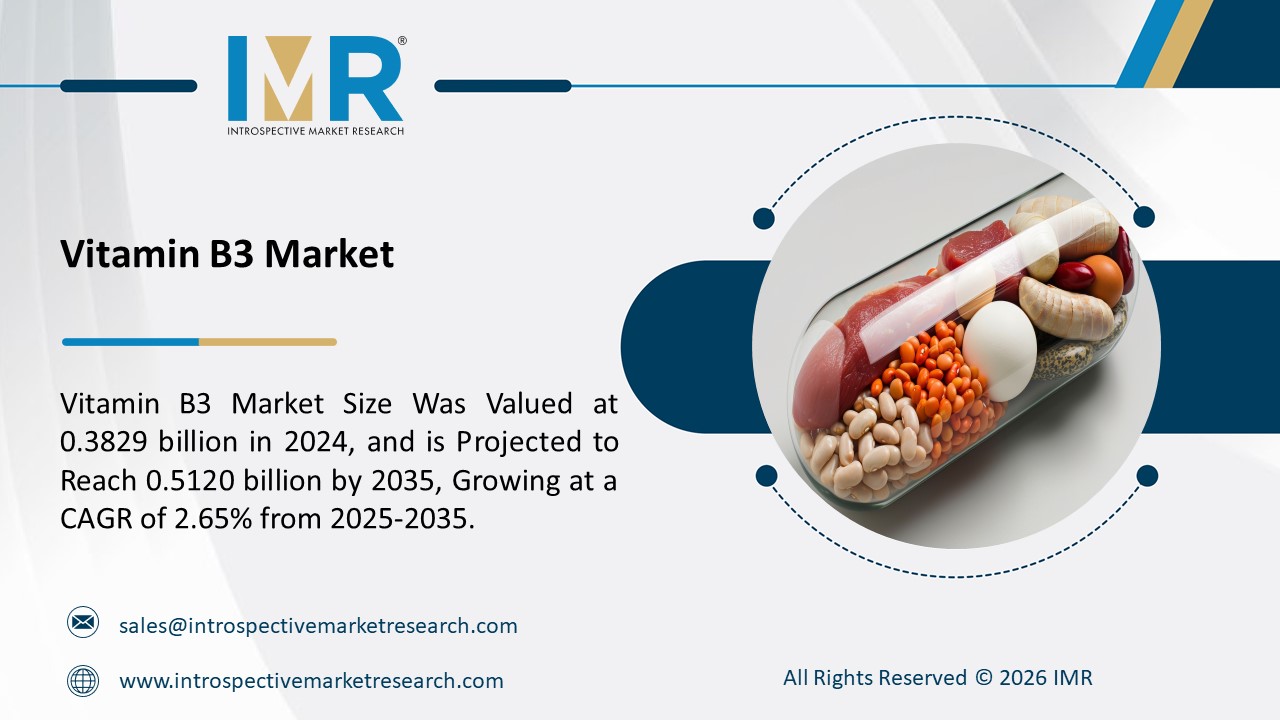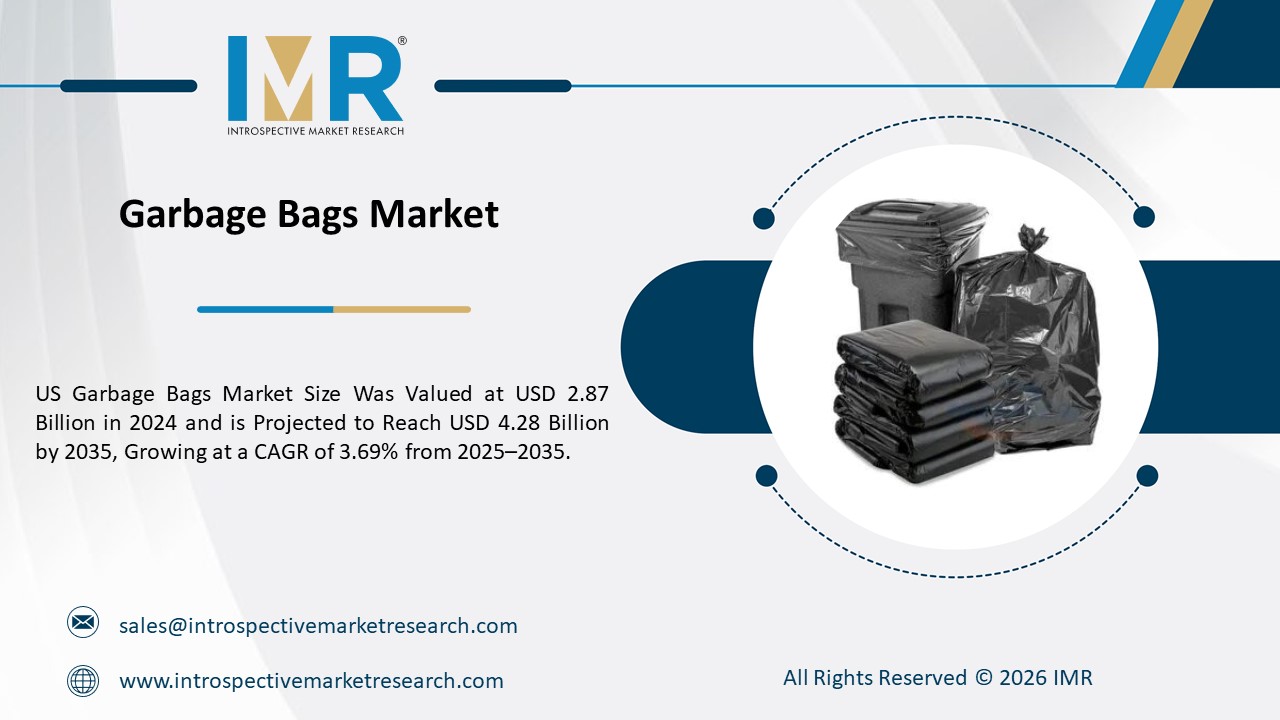
Electronic Device History Record (eDHR) Software Market
According to a new report published by Introspective Market Research, titled, ?Electronic Device History Record (eDHR) Software Market by Application and Deployment Model: Global Opportunity Analysis and Industry Forecast, 2024?2032,?
the global Electronic Device History Record (eDHR) Software market size was valued at $69.79 billion in 2023, and is projected to reach $249.38 billion by 2032, registering a CAGR of 15.20% from 2024 to 2032.
Electronic Device History Record (eDHR) software is a digital solution for managing and documenting the entire manufacturing life cycle of electronic devices. It automates registration processes, ensures regulatory compliance, facilitates traceability, and makes production-related data and documentation more efficient through digitization and centralization. eDHR software is widely used in various industries, especially in the manufacture of electronic devices to meet regulations and product quality standards. This tool automates and simplifies the documentation process related to production and quality assurance tasks. This gives manufacturers the power to control all aspects of the production cycle, from material procurement to final product assembly and testing and compliance documentation.
Adopting eDHR software offers several benefits to manufacturers. it improves efficiency by replacing manual paperwork with more streamlined data entry processes, minimizing the risk of errors. In addition, it promotes transparency and visibility throughout the production process, allowing stakeholders to access real-time information and effectively monitor production operations.
According to theElectronic Device History Record (eDHR), Software Market is segmented into Deployment Model, Application, and Region. By Type, the market is categorized into Cloud-Based eDHR Software and On-Premise eDHR Software. By Application, the market is categorized into Medical Device Manufacturing, Electronics Manufacturing, Aerospace & Defense, and Automotive Industry. By region, it is analyzed across North America (U.S.; Canada; Mexico), Eastern Europe (Bulgaria; The Czech Republic; Hungary; Poland; Romania; Rest of Eastern Europe), Western Europe (Germany; UK; France; Netherlands; Italy; Russia; Spain; Rest of Western Europe), Asia-Pacific (China; India; Japan; Southeast Asia, etc.), South America (Brazil; Argentina, etc.), Middle East & Africa (Saudi Arabia; South Africa, etc.).
Electronic Device History Record (eDHR) software is a digital solution for managing and documenting the entire manufacturing life cycle of electronic devices. It automates registration processes, ensures regulatory compliance, facilitates traceability and streamlines production-related data and documentation through digitization and centralization. eDHR software is widely used in various industries, especially in the manufacturing of electronic devices to meet regulatory and product quality standards. This tool automates and simplifies the documentation process related to production and quality assurance tasks. This enables manufacturers to control all aspects of the production cycle, from material sourcing to final product assembly and testing and compliance documentation. Implementing eDHR software offers several benefits to manufacturers. it improves efficiency by replacing manual paperwork with more streamlined data entry processes, minimizing the risk of errors. In addition, it promotes transparency and visibility throughout the production process, allowing stakeholders to receive real-time information and effectively monitor production operations.
Integration with other enterprise software systems offers a significant opportunity to drive growth in the eDHR (Electronic Device History Record) software market. As industries embrace digital transformation, interoperability, and information exchange between different software platforms will become increasingly prominent. Seamlessly integrated with systems such as enterprise resource planning (ERP), manufacturing execution systems (MES), and quality management systems (QMS), eDHR software improves operational efficiency and unlocks synergy across the organization.
The integration of eDHR software with other business systems allows manufacturers to obtain a consolidated overview of their operations, simplifying data management and decision-making processes. By aggregating information from various sources into a single platform, eDHR software facilitates real-time access to critical information, empowering stakeholders to make timely and informed decisions.
Global Electronic Device History Record (eDHR) Software Market, Segmentation
The Electronic Device History Record (eDHR) Software market is segmented based on Deployment Model, Application, and Region.
Application:
The Application segment is further classified into Medical Device Manufacturing, Electronics Manufacturing, Aerospace & Defense, and Automotive Industry. Among these, the Medical Device Manufacturing sub-segment accounted for the highest market share in 2023. The medical device manufacturing sector is at the forefront of eDHR software market expansion. Stringent regulatory standards and an emphasis on product integrity and safety in the medical device industry are fueling the growing demand for robust documentation and quality management solutions such as eDHR software. This software allows medical device manufacturers to keep accurate records of the manufacturing process, including material usage, manufacturing processes, and quality protocols. This ensures compliance with regulatory frameworks such as the FDA's Quality System Regulation (QSR). eDHR software plays a key role in increasing the efficiency and traceability of medical device manufacturing. With its digital and automation functions, the software simplifies data management, eliminates errors, and facilitates real-time monitoring of production activities. Thus, it creates comprehensive traceability for each manufactured device, from the acquisition of raw materials to the final assembly of the product.
Deployment Model:
The Deployment Model segment is further classified into Cloud-Based eDHR Software and On-Premise eDHR Software. Among these, the Cloud-Based eDHR Software sub-segment is anticipated to show the fastest growth by 2032. The dominance of the cloud-based eDHR software segment has fueled the growth of the electronic device history record (eDHR) software market. As cloud technology penetrates various industries, there is a growing demand for customizable and scalable software solutions that facilitate better usability and collaboration. Cloud-based eDHR software leverages cloud infrastructure to provide a centralized platform that enables remote management of electronic device history records, improving seamless access to information and collaboration across distributed teams. Cloud-based eDHR software outperforms traditional on-premise solutions with many advantages, including IT infrastructure costs, simplified deployment, and maintenance processes, and enhanced security and compliance measures. The use of cloud technology enables manufacturers to access real-time information, simplify decision-making processes, and adapt to rapidly changing business requirements.
Region:
The Electronic Device History Record (eDHR) Software market in North America is projected to show the fastest growth by 2032. North America is expected to lead the growth of the electronic device history record (eDHR) software market as the dominant region. Due to the robust healthcare industry and strict regulatory standards governing the manufacturing of medical devices, the demand for high-quality management systems such as eDHR software has increased. The region's established medical device industry, coupled with strong technological innovation, is driving the adoption of eDHR software solutions to ensure regulatory compliance and maintain product quality. North America benefits from advanced IT infrastructure and extensive digitization across industries, which facilitates the integration and deployment of eDHR software systems. The presence of major market players and technological innovators in the region will further boost the growth of the market.
Some of The Leading/Active Market Players Are-
- MasterControl Inc. (U.S.)
- Oracle (U.S.)
- Arena Solutions Inc. (U.S.)
- Propel PLM Inc. (U.S.)
- Autodesk Inc. (U.S.)
- 42Q (U.S.)
- Dataworks (U.S.)
- Aras Corporation (U.S.)
- Sparta Systems Inc. (U.S.)
- ComplianceQuest Inc. (U.S.) and Other Active Players
Key Industry Developments
- In April 2023, Siemens Digital Industries Software and IBM announced they are expanding their long-term partnership by collaborating to develop a combined software solution integrating their respective offerings for systems engineering, service lifecycle management, and asset management.
Key Findings of the Study
- The global Electronic Device History Record (eDHR) Software market reached $69.79 Billion in 2023 and is forecasted to hit $249.38 Billion by 2032, showcasing a 15.20% CAGR from 2024 to 2032.
- Medical Device Manufacturing leads in market share due to stringent regulations, pushing demand for eDHR software.
- Cloud-based eDHR Software is poised for rapid growth, offering scalability, remote management, easy deployment, and enhanced security.
- North America spearheads market expansion, leveraging its robust healthcare sector, stringent regulations advanced IT infrastructure, and a focus on compliance and product quality.





